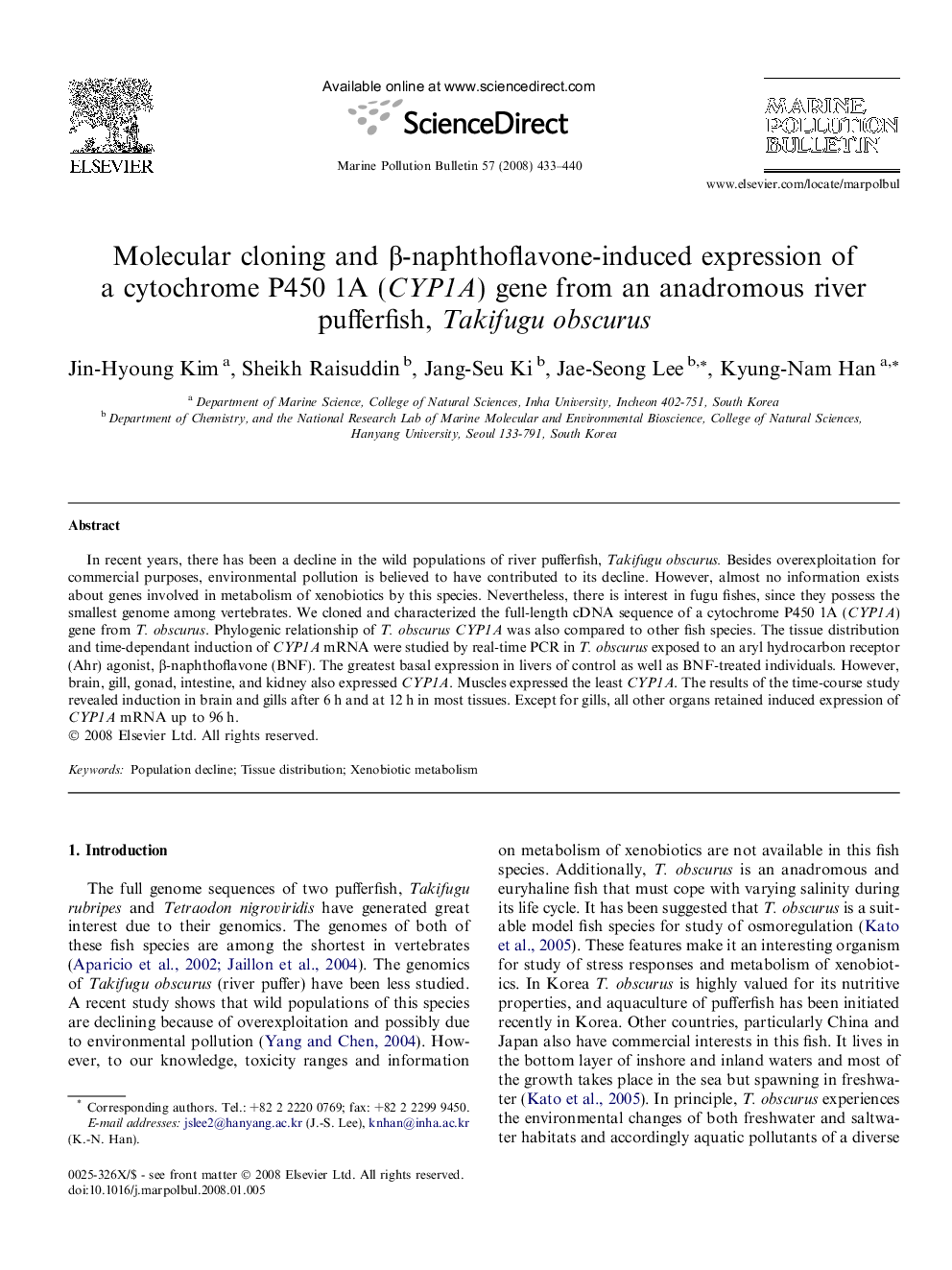| Article ID | Journal | Published Year | Pages | File Type |
|---|---|---|---|---|
| 4477055 | Marine Pollution Bulletin | 2008 | 8 Pages |
Abstract
In recent years, there has been a decline in the wild populations of river pufferfish, Takifugu obscurus. Besides overexploitation for commercial purposes, environmental pollution is believed to have contributed to its decline. However, almost no information exists about genes involved in metabolism of xenobiotics by this species. Nevertheless, there is interest in fugu fishes, since they possess the smallest genome among vertebrates. We cloned and characterized the full-length cDNA sequence of a cytochrome P450 1A (CYP1A) gene from T. obscurus. Phylogenic relationship of T. obscurus CYP1A was also compared to other fish species. The tissue distribution and time-dependant induction of CYP1A mRNA were studied by real-time PCR in T. obscurus exposed to an aryl hydrocarbon receptor (Ahr) agonist, β-naphthoflavone (BNF). The greatest basal expression in livers of control as well as BNF-treated individuals. However, brain, gill, gonad, intestine, and kidney also expressed CYP1A. Muscles expressed the least CYP1A. The results of the time-course study revealed induction in brain and gills after 6 h and at 12 h in most tissues. Except for gills, all other organs retained induced expression of CYP1A mRNA up to 96 h.
Related Topics
Physical Sciences and Engineering
Earth and Planetary Sciences
Oceanography
Authors
Jin-Hyoung Kim, Sheikh Raisuddin, Jang-Seu Ki, Jae-Seong Lee, Kyung-Nam Han,
